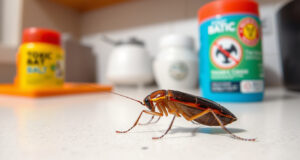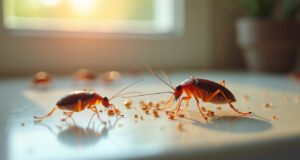
Pest control can be hard. When pests come into your home or garden, the task may seem overwhelming. The right tools can help a lot. Try sticky traps. They work well and keep our earth in mind. In this complete guide, we explain what sticky traps do, how they work, and why they should join your pest control plan.
What Are Sticky Traps?
Sticky traps are small tools that catch insects and tiny rodents. They use a piece of cardboard or plastic and a sticky glue that does not dry. Many traps use a sight cue or a food lure to bring the pest close. When a pest touches the glue, it stays there. Common sticky traps include:
- Insect traps: These catch small flying or crawling bugs like fruit flies, gnats, and spiders.
- Rodent traps: These catch mice and small rodents without any lure.
- Pest-specific traps: These traps are made for certain bugs, like wasps or cockroaches.
How Do Sticky Traps Work?
Sticky traps work with a simple plan. The glue holds the pest when it touches the trap. Here is the basic idea:
- Attraction: Some traps show bright shades or use a light scent. For instance, yellow traps work well for many flying bugs.
- Capture: When a pest lands on the glue, it gets stuck. The strong glue keeps it in place until you can throw it away.
- Monitoring: The traps also let you see which pests are common. When you count the caught bugs, you know more about your pest problem.
Benefits of Using Sticky Traps
- Earth-friendly: Sticky traps work without harsh sprays or poisons. This makes them safe for families and pets.
- Simple to use: You need only to put the trap where pests are seen. No special skills are needed.
- Low cost: Sticky traps cost less than many other pest tools.
- Versatile: You can use these traps at home, in the garden, or in a greenhouse.
- Clean work: All caught pests stay in one spot, so cleaning up is easy.
Best Practices for Using Sticky Traps
To get the best use from sticky traps, try these tips:
- Placement: Put traps where pests seem to hide. Look for spots near windows, doors, or dark corners.
- Regular checks: Look at traps often. Replace one that is full or has lost its stickiness.
- Use with other tools: A mix of sticky traps and other pest methods may help to cut the problem down.
- Smart baiting: Some traps work by themselves. Others may work better if you add a little food or scent.
Conclusion
Sticky traps are a smart, low-cost, and earth-friendly choice for pest control. If you face ants in the kitchen, flies in the living room, or mice in the garage, these traps work simply and well. By adding sticky traps to your pest control plan, you protect your home and keep the air and space healthy for those you love.
Have you tried sticky traps before? Share your thoughts or tips in the comments below!




